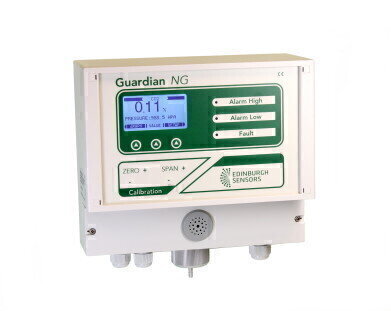Gas Detection
Monitoring Leak Rates During LPG Bottling
May 09 2018
Liquid petroleum gas (LPG) is used in a variety of applications, such as domestic cooking, heating and for motor fuels.
LPG usually consists of butane, propane or a mixture of these gases, though the definition is country-dependent. It is produced from natural gas processing and oil refining, where it is separated via either refrigeration or distillation before being pressurised, liquefied and stored in cylinders under pressure so that it remains in its liquid form, and can be subsequently used as a gas or liquid.
The LPG Bottling Process
LPG bottling, the process of compressing and storing LPG in gas cylinders, is a complex process which carries risk.
Firstly, the gaseous hydrocarbons must be compressed, under high pressure, into a liquid which is stored in a large cylinder. The compression of the gas results in an increase in its temperature, as the internal energy of the system is being increased. As LPG has an autoignition temperature of 470°C (this is the temperature at which the gas will spontaneously explode without an ignition source), the compression system must be kept cool to mitigate the risk of explosion as the gas is compressed and its internal temperature rises.
Once the gas has been compressed into a large container it must then be transferred into smaller containers, which range in size from 1 kg LPG capacity to 50 kg, for transportation and sale. As the gas is now in a compressed state this must be done with care as leaks can be violent. Additionally, the volume of gas transferred must be known to a high degree of accuracy as overfilling is problematic.
LPG cannisters should only be filled to 80% of their capacity to account for increases in the gases volume should the cylinder be exposed to high temperatures. If the cylinder were to be overfilled increases in volume could result in the cylinder valve failing, which would result in uncontrolled leaking. Given the colourless and odourless nature of LPG, leaks can be hard to detect without the use of a hydrocarbon gas sensor.
Hydrocarbon Gas Detectors from Edinburgh Sensors
Edinburgh Sensors have over 40 years of experience in gas sensor technologies, particularly with infra-red detection. They offer a comprehensive portfolio of devices suitable for detection of a range of gases, including the hydrocarbon gases found in LPG bottling plants, which are fast, accurate and highly reliable.
In particular, the Guardian NG and GasCard ranges are tailored for hydrocarbon detection with sufficient sensitivity they can be used to control and monitor filling processes in LPG bottling plants. The Guardian NG is designed as a stand-alone gas sensor, capable of detecting hydrocarbon gas concentrations ranging from 0 – 3000 ppm and 0 – 100% volume. The device also has on-device display with set-up menus that can also be used for the graphical display of historic readings over a user-defined period.
For situations where integration into another device may be required, the GasCard series also offers real-time measurements and similar measurements ranges to the Guardian NG series. There is a huge amount of customisability with the GasCard range and all GasCards come with one-to-one customer service and technical support, including support for system integration, essential for the legal requirements of the gas detection systems that have to be present at LPG bottling plants.
Digital Edition
IET 34.2 March 2024
March 2024
Gas Detection - Biogas batch fermentation system for laboratory use with automatic gas analysis in real time Water/Wastewater - Upcycling sensors for sustainable nature management - Prist...
View all digital editions
Events
Apr 22 2024 Hannover, Germany
Apr 22 2024 Marrakech, Morroco
Apr 23 2024 Kuala Lumpur, Malaysia
Apr 23 2024 Kintex, South Korea
Apr 23 2024 Edmonton, AB, Canada


















